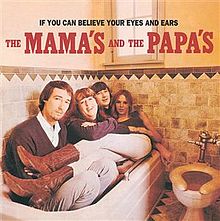As we left Part One, the players had won free agency status in the Messersmith case, leading to the owners and players entering into a collective bargaining agreement (CBA). One of the key CBA provisions required that free agency be an individual right so that players could not band together for leverage (as Don Drysdale and Sandy Koufax had done in their joint holdout in 1966). The owners were likewise to act independently – that is, they were prohibited from colluding to hold down salaries.
As expected, free agency produced escalating salaries in the late 70’s and early 80’s. The owners were unhappy even though their own bidding against each other is what set the market. The owners’ solution, with a nudge from Commissioner Peter Ueberroth, was to act in concert to quit bidding for the players – by another name, collusion. The battle was on: the players led by Don Fehr against the owners led by Peter Ueberroth.
Collusion I (After 1985 Season): Collusion came into full bloom after the 1985 season. There were over 30 free agents, including superstar Kirk Gibson. Four were not wanted by their current teams and so signed as free agents with other teams. The others found a closed market.
And also a deadline. Under the CBA, each player could sign with any team until January 8. After that, a player could sign with any team EXCEPT his current team – he could only do that after May 1 (thus missing the first month of the season if he was not signed by another team). As January 8 approached, it became clear that the owners were not going to make offers for players on other teams. With the market chilled and the pressure of potentially missing a month of the season, Gibson and the rest of the remaining free agents capitulated and signed with their old teams by the January 8 deadline.
The collusion was hardly a secret. A Sporting News cover read “Why won’t anyone sign Kirk Gibson?” And on the cover of Sports Illustrated:

The Kansas City Royals actually thought about signing Gibson and entertained him with a hunting trip. But their interest cooled after the winter meetings when the owners closed ranks. The reserve clause had returned in a new form.
The union filed a grievance claiming collusion. The case went to arbitration, but it would not be decided before the beginning of…
Collusion II (After 1986 Season): Same song, second verse. After the 1986 season, the clubs were again not bidding. Most players signed with their former teams by the January 8 deadline. A brave band of players did not (the “January 8 Eight”). One of them got an offer and changed teams. Six did not and were forced to eventually sign with their old teams and suffer the penalty of not playing until May 1.
The eighth player was future Hall of Famer Andre Dawson, an 11-year veteran of the Montreal Expos. No team other than the Expos offered to sign him. Dawson wanted to play on natural turf to protect his knees, and so he wanted out of Montreal. His preference was the Cubs, and when they said no, his agent Dick Moss filled out a contract that left the salary blank. The Cubs were put on the spot and filled in $500,000, the second lowest salary among the regulars on the team. How did the unwanted Dawson do for the Cubs that season? He led the league in home runs and RBI’s and was named the NL MVP.
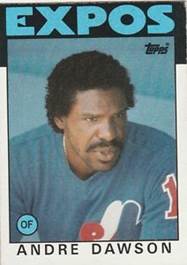
The union filed a second grievance claiming collusion and hired Kansas City attorney Steve Fehr to serve as lead counsel for this arbitration.

Steve Fehr
Collusion I Decision: In September of 1987, there was an initial decision in Collusion I. The arbitrator ruled that the owners had colluded in violation of the CBA. Specific remedies would follow in later rulings.
Collusion III (After 1987 Season): The owners now knew they had lost Collusion I and expected a similar result in Collusion II. So it was time for a new tactic. They set up a secret “Information Bank” where clubs fed information of offers and terms to Commissioner Ueberroth. This info was then made available to any team. The union was not told about this, but thought the pattern of offers was fishy and so filed a new grievance with Steve Fehr again serving as lead counsel. The owners said what they had done was pro-competitive, and the union countered “then why didn’t you tell us about it?”.
Kirk Gibson – Free at Last: In January of 1988, the arbitrator in Collusion I additionally ruled that seven players were eligible for a “second look” at free agency even if they were under contract. This included Kirk Gibson who had been forced to stay with the Tigers. The newly freed Gibson signed with the Dodgers and proceeded to put up an MVP season and lead the team to the 1988 NL pennant. The Dodgers then beat the Mets in seven games in the NLCS, with Gibson hitting decisive homers and making a highlight-reel catch (click here). The bad NLCS news was that Gibson injured his left hamstring in Game 5 and his right knee in Game 7.
The Dodgers moved on to the World Series to play the heavily favored Oakland A’s. Gibson’s injuries were serious – he could hardly walk. So he had only one at bat in the entire Series. But what an at bat. With two out in the last of the ninth in Game 1, Gibson hobbled up to the plate to pinch hit. There was one man on base and the A’s led 4-3. In an epic 7-pitch duel with Dennis Eckersley, Gibson ignored his two bad legs and used his upper body strength to hit a walk-off home run. The Dodgers went on the win the Series, four games to one.
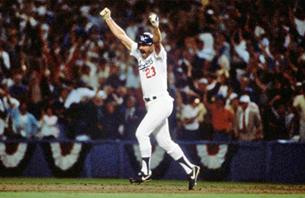
Click here to see a short clip of Gibson’s homer, including the fist-pumps as he rounded second. But if you have quality time to waste like I do, I recommend that you click here and watch the long (but riveting) at bat and hear Vin Scully make the call (9:44).
Collusion Settlement: The players ultimately won every case (I, II and III), and the damages were consolidated into one settlement of $280 million. And second-look free agent Kirk Gibson got to move from the Tigers to the Dodgers and hit his historic home run.
Ueberroth to Vincent to Selig: In 1989, the man who led the owners on the collusion path was replaced. Peter Ueberroth was succeed by Bart Giamatti who brought in Fay Vincent to be his deputy. Giamatti died after only five months in office, and MLB gave the job to Vincent. They must not have vetted him. He thought his role was to normalize relations with the players and move on from the collusion era. The owners had other ideas.
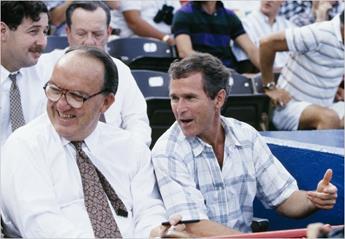
Fay Vincent and Rangers Owner George Bush
When the parties could not agree on a new CBA for 1990, the owners locked out the players in spring training. A settlement was reached, but harmony was not in the air. Realizing that Vincent did not share their attitude, the owners forced him out in 1992. He later wrote a book titled The Last Commissioner, a title bestowed upon him by NYT sportswriter George Vecsey – the meaning being that Vincent would be the last neutral commissioner who could serve as a mediator between the players and owners. Marvin Miller would argue that no commissioner had ever been truly neutral, but Vincent did later have some strong words about the owners:
“The Union basically doesn’t trust the Ownership because collusion was a $280 million theft by Selig and Reinsdorf of that money from the players. I mean, they rigged the signing of free agents. They got caught. They paid $280 million to the players. And I think that’s polluted labor relations in baseball ever since it happened. I think it’s the reason Fehr has no trust in Selig.”
The owners replaced Vincent with…Milwaukee owner Bud Selig.
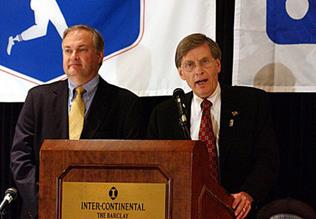
Don Fehr and Bud Selig
Labor Unrest: The situation went from bad to worse as the parties could not agree on free agency, arbitration and revenue sharing. The sad result: The 1994 season ended on August 11 when the players went out on strike. The postseason was cancelled – the first year without a World Series since 1904. That story will be told in Part Three (the last, I promise) of this series of Hot Stove posts. Key names that you will see: the Brothers Fehr, Bud Selig, Rob Manfred, David Cone, Roger Angell and Supreme Court Justice Sonia Sotomayor.
Kansas City Royals – From Messersmith through Collusion: Joe Burke was the general manager of the Royals from 1974 to 1981. In 1976, the Messersmith Case established free agency. As chronicled by Peter Gammons in Sports Illustrated, “Burke was one of the quickest to adapt to the new realities of the marketplace. Indeed, his signing of Mayberry to a five-year, $1 million deal was the first big multiyear contract of the post-Messersmith era. Within a year, Burke had tied up almost all of his regulars with long-term contracts.”
Those regulars included George Brett, Frank White, Amos Otis, Hal McRae, Dennis Leonard and Paul Splittorff. By the time each of these players reached the third of his five or six year contract, he was earning roughly a third of what he would have earned in the open market. The results were remarkable for a small market team. The Royals won the American League West in 1976, 1977 and 1978. In 1980, they won the AL pennant with the seventh lowest payroll in baseball.
After the 1980 trip to the World Series, some players were disgruntled with their relatively low salaries, but new signings kept most of them satisfied. Frank White and Hal McRae shared an agent who tried to use the younger White as leverage to get a new deal for the older McRae. Joe Burke was not happy with that, nor was White who fired the agent and replaced him with Steve Fehr. After the 1981 season, Joe Burke became Team President, and his assistant John Schuerholz moved up to the GM position.
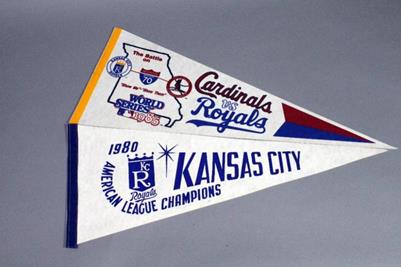
The Royals were in postseason play in 1981 and 1984 and won the World Series in 1985. So in the first ten years of free agency after Messersmith, the Royals were in the postseason seven times. Ironically, in those ten years, they never signed a significant free agent, and they only lost one (Darrell Porter). As a Royals fan, my thanks to the visionary Joe Burke. John Schuerholz too.
While the Royals were winning the 1985 World Series, the owners were beginning their collusion activity in anticipation of the 1986 season. In an odd twist, the Royals made a pass at free agent Kirk Gibson, but backed off after getting the word. The Royals, having been in the postseason seven out of the ten years before collusion, then missed the postseason the next 29 years.
Lonnie’s Jukebox – California Dreamin’: In honor of the holdouts by Don Drysdale and Sandy Koufax in March of 1966, I am picking a song that peaked at #4 on the charts that month. It also had a title matching their hopes for higher salaries from the Los Angeles Dodgers. “California Dreamin’…if I was in L.A. …California Dreamin’…I could leave today…California Dreamin’.”
I was in my second year in law school when The Mama’s and The Papa’s released their first album that had two instant classic cuts: “Monday, Monday” and “California Dreamin’.” I remember hearing the songs over and over at a party at the home of Hollis (my classmate) and Fran Hanover. The other folk rocker song that sticks in my memory from that night was “You Were on My Mind” by the We Five. A long time ago, in a musical genre far, far away.
Click here to join 180,000,000 prior views of The Mama’s and The Papa’s singing “California Dreamin’.”
